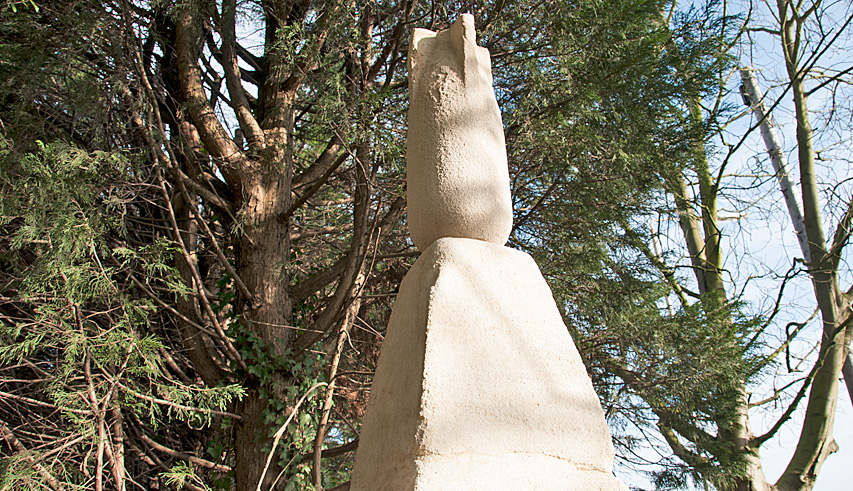 |
|||
MEMORIALS |
Anti-Aerial Bombing memorial In May 1936 there appeared an announcement in the Essex based New Times and Ethiopia News. 'In these days of ever threatening war, the necessity of effective and ceaseless opposition cannot be over-emphasised. The powers of Science have given aerial war a capacity of devastation and destruction without parallel in the history of mankind'. It was important, she continued, that people were 'made more fully alive to this danger' and, with this aim in mind, it was intended to 'erect a model in stone of an aerial torpedo bomb'. The monument would be the first of its kind. The first Anti-Air War Memorial was unveiled on 21 June and stood prominently outside Red Cottage, Sylvia's home along with a plaque dedicating it ironically to politicians who, at the World Disarmament Conference opened in Geneva in February 1932, ‘upheld the right to use bombing planes’. |
Anti-Aerial Bombing memorial |
| see children's memorial aerial bombardment World Disarmament Conference Sylvia Pankhurst |
According to Eric Banfield who carved the memorial, the stone bomb was a response to the fact that, in 1934, the year after Hitler’s accession to power, a section of the press was 'making much of certain politicians who seemed to be boasting that they, and they alone, had prevented the abolition of bombing planes', proposed by Germany at the League of Nations Disarmament Conference in Geneva in 1932. The monument was treated as a provocation by fascist sympathisers. It was smeared with creosote on its very first night, and shortly afterwards it was stolen. Benfield promptly set about making a new one, and the publicity caused by the despoilers ensured that the second unveiling, which took place on 4 July 1936, achieved much greater interest than the first. Respected during the post-war decades by local Quakers the monument rallied anti-nuclear interest in the 1980s. An annual Peace Picnic was held there, evoking the spirit of Greenham Common and ornamented by the Peace Pledge Union's white poppies. Thanks to the initiative of Sylvia Ayling, a local resident, it was declared a Grade II listed structure. Recalling his monument during the second world war, Eric Benfield wrote: 'There was a strong Pacifist flavour about the unveilings; it was Anti-War, Anti-Bombing, Pacifist or what you will. Yet I knew that there had not been one such urge in its first stirrings in my mind or in its execution. According to a dictionary, to pacify means to soothe, to calm – anything rather than to fight. But I had no intention of soothing or calming anyone; it was my way to fight.' |
|
Peace Pledge Union, 1 Peace Passage, London N7 0BT. Tel +44 (0)20 7424 9444 contact | where to find us
